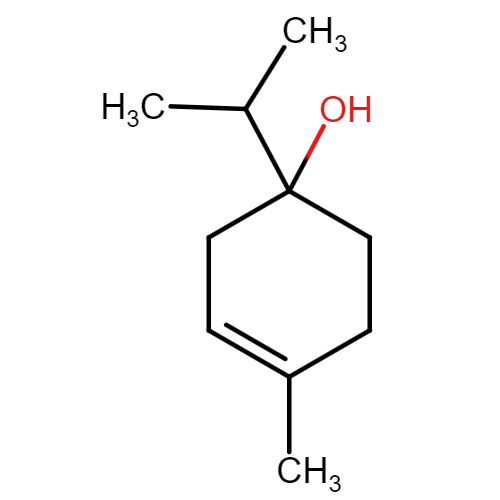4- Terpineol
| Compound Structure: |

|
||||||||||||||||||||||||||||||||||||||||||||||
|---|---|---|---|---|---|---|---|---|---|---|---|---|---|---|---|---|---|---|---|---|---|---|---|---|---|---|---|---|---|---|---|---|---|---|---|---|---|---|---|---|---|---|---|---|---|---|---|
| Synonyms: | 4-Carvomenthenol;Terpinen-4-ol;562-74-3;4-Terpineol;p-Menth-1-en-4-ol;1-Terpinen-4-ol;Terpinenol-4;1-p-Menthen-4-ol;Terpene-4-ol;1-Menthene-4-ol;TERPINENE-4-OL;1-para-Menthen-4-ol;3-Cyclohexen-1-ol, 4-methyl-1-(1-methylethyl | ||||||||||||||||||||||||||||||||||||||||||||||
| Compound ID: | NMPC-383 | ||||||||||||||||||||||||||||||||||||||||||||||
| PubChem ID: | |||||||||||||||||||||||||||||||||||||||||||||||
| Molecular Formula: | C10H18O | ||||||||||||||||||||||||||||||||||||||||||||||
| Canonical SMILES: | CC1=CCC(CC1)(C(C)C)O | ||||||||||||||||||||||||||||||||||||||||||||||
| InChIKey: | WRYLYDPHFGVWKC-UHFFFAOYSA-N | ||||||||||||||||||||||||||||||||||||||||||||||
| About the compound: | Terpinen-4-ol is identified as a terpineol isomer with the chemical structure C10H18O and is a prominent component of tea tree oil, which is extracted from the leaves, branches, and bark of Melaleuca alternifolia Cheel. This compound has been linked to contact dermatitis when tea tree oil is applied topically and is also present in Juniperus communis, contributing to the timber's high resistance to decay [1]. The substance is known for various potential health benefits, such as reducing inflammation, acting as an antioxidant, eliminating microbes, improving mood, lessening stress, relieving pain, and supporting digestive health. Terpinen-4-ol finds application in cosmetics for its therapeutic effects and scent, in vaping products, and as a food flavoring agent, but it requires dilution prior to use due to its strength [2]. From a chemical standpoint, terpinen-4-ol falls within the aliphatic homomonocyclic compound category and is recognized among tertiary alcohols and menthane monoterpenoids. Its pharmacological role includes acetylcholinesterase inhibition, which hints at its importance in biochemical pathways, yet the exact impact and operational mechanisms remain to be fully elucidated. Clinical research into its efficacy for treating conditions such as seborrheic blepharitis and chronic blepharitis suggests its potential for therapeutic use [3]. References 1. Wikipedia contributors. (n.d.). Terpinen-4-ol. In Wikipedia, The Free Encyclopedia. Retrieved from https://en.wikipedia.org/wiki/Terpinen-4-ol 2. Finest Labs. (n.d.). What is Terpineol? Benefits, Uses, and Effects. Retrieved from https://finestlabs.com/what-is-terpineol/ 3. DrugBank Online. (n.d.). Terpinen-4-ol: Uses, Interactions, Mechanism of Action. Retrieved from https://go.drugbank.com/drugs/DB14106 GHS Hazard Statements • H302 (99.95%): Harmful if swallowed [Warning Acute toxicity, oral] • H315 (98.38%): Causes skin irritation [Warning Skin corrosion/irritation] • H319 (96.56%): Causes serious eye irritation [Warning Serious eye damage/eye irritation] • H336 (10.99%): May cause drowsiness or dizziness [Warning Specific target organ toxicity, single exposure; Narcotic effects] |
||||||||||||||||||||||||||||||||||||||||||||||
| Properties: |
Chemical
and Physical Properties
Source: PubChem |
||||||||||||||||||||||||||||||||||||||||||||||
| Source Species: |
Ocimum basilicum Phyllanthus muellerianus Solanum nigrum Acalypha ornata Eucalyptus cloeziana Taxodium distichum Eucalyptus torelliana Tecoma stans |